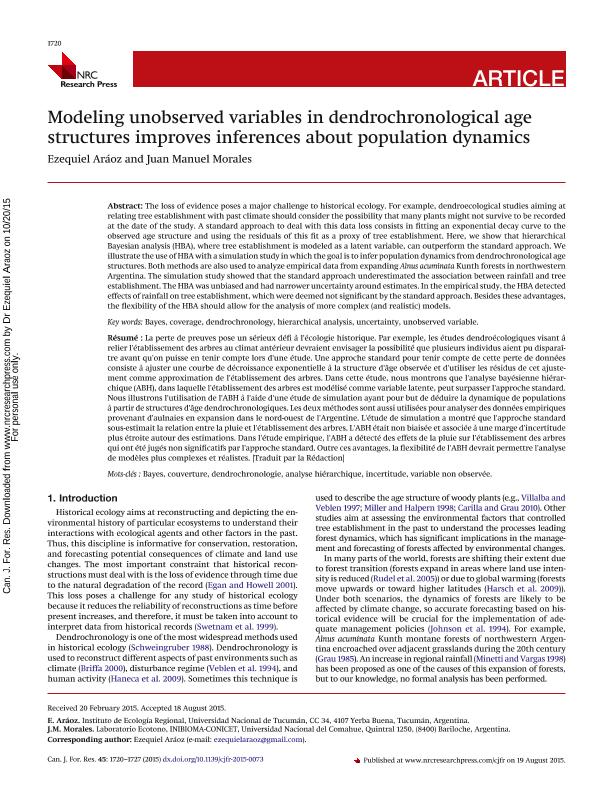Artículo
Modeling unobserved variables in dendrochronological age structures improves inferences about population dynamics
Fecha de publicación:
08/2015
Editorial:
Natl Research Council Canada-n R C Research Press
Revista:
Canadian Journal Of Forest Research
ISSN:
0045-5067
Idioma:
Inglés
Tipo de recurso:
Artículo publicado
Clasificación temática:
Resumen
The loss of evidence poses a major challenge to historical ecology. For example, dendroecological studies aiming at relating tree establishment with past climate should consider the possibility that many plants might not survive to be recorded at the date of the study. A standard approach to deal with this data loss consists in fitting an exponential decay curve to the observed age structure and using the residuals of this fit as a proxy of tree establishment. Here, we show that hierarchical Bayesian analysis (HBA), where tree establishment is modeled as a latent variable, can outperform the standard approach. We illustrate the use of HBA with a simulation study in which the goal is to infer population dynamics from dendrochronological age structures. Both methods are also used to analyze empirical data from expanding Alnus acuminata Kunth forests in northwestern Argentina. The simulation study showed that the standard approach underestimated the association between rainfall and tree establishment. The HBA was unbiased and had narrower uncertainty around estimates. In the empirical study, the HBA detected effects of rainfall on tree establishment, which were deemed not significant by the standard approach. Besides these advantages, the flexibility of the HBA should allow for the analysis of more complex (and realistic) models.
Palabras clave:
Bayes
,
Coveraje
,
Dendrochronology
,
Hierarchical Analysis
Archivos asociados
Licencia
Identificadores
Colecciones
Articulos(INIBIOMA)
Articulos de INST. DE INVEST.EN BIODIVERSIDAD Y MEDIOAMBIENTE
Articulos de INST. DE INVEST.EN BIODIVERSIDAD Y MEDIOAMBIENTE
Citación
Aráoz, Ezequiel; Morales, Juan Manuel; Modeling unobserved variables in dendrochronological age structures improves inferences about population dynamics; Natl Research Council Canada-n R C Research Press; Canadian Journal Of Forest Research; 45; 12; 8-2015; 1720-1727
Compartir
Altmétricas




